Discovering Amazing Surfing Spots for All Levels
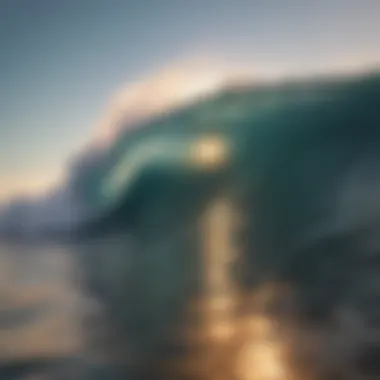
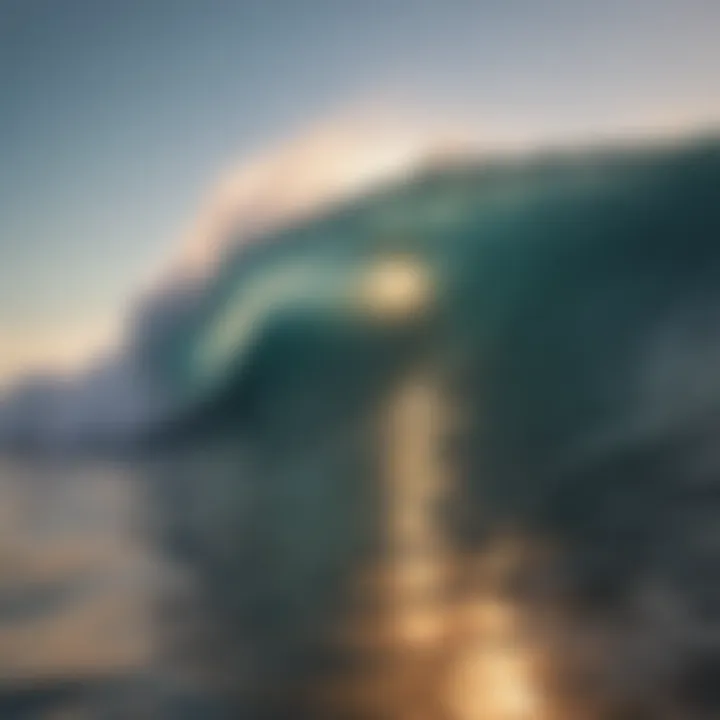
Intro
Surfing is more than just a sport—it's a way of life. Finding the perfect wave can transform your entire day, whether you're a novice searching for your first ride or a seasoned pro hunting for that elusive barrel. In this guide, we'll embark on a journey to explore some remarkable surfing spots right in your vicinity, tailored for enthusiasts at every skill level.
Understanding wave conditions, local culture, and accessibility are paramount when selecting a surfing destination. We’ll also delve into different techniques, essential gear, and sustainable practices, ensuring your surfing experience is both thrilling and responsible. So grab your board, and let’s dive into the world of surfing places waiting to be discovered!
Surfboarding Techniques
Beginner Tips for Mastering the Basics
Starting off in the surfing world can feel like trying to learn a new language—overwhelming yet exciting. Here are some key tips to get you smoothly paddling and riding the waves:
- Choose the Right Board: A longer, wider board provides better stability and makes it easier to catch waves.
- Practice Paddling: Before hitting the waves, get comfortable with paddling. This fundamental skill is essential.
- Positioning Matters: Lie on your board with your body centered. Too far forward and you’ll nose dive; too far back and you’ll miss waves.
- Pop Up Technique: When you feel the wave catch you, push up quickly with your hands and bring your feet underneath you, standing in one smooth move.
These steps will help you gain confidence and find your rhythm on the water.
Advanced Techniques for Seasoned Surfers
For those with more experience, extending your skills can open up a whole new realm of possibilities. Here are advanced techniques that seasoned surfers can explore:
- Carving: Learn to shift your weight to make sharp turns. This technique allows you to navigate waves effectively.
- Duck Dive: This skill enables you to push your board under incoming waves, minimizing resistance and allowing for smoother paddling out.
- Aerial Maneuvers: If you're feeling adventurous, try launching off the lip of a wave to perform aerial tricks. This requires precision and practice but can elevate your surfing game.
These advanced skills take time to master but can significantly enhance your surfing experience.
Surfboard Equipment
Reviews of the Latest Surfboards on the Market
Choosing the right surfboard can be a daunting task, given the vast array of options available today. Notable models to consider include the Firewire Dominator and Channel Islands Biscuit.
- Firewire Dominator: Known for its durability and versatility, this board performs well in various conditions.
- Channel Islands Biscuit: Great for small wave days. Its shape helps in maintaining speed and maneuverability.
Research shows that selecting a board suited to your style and skill level can greatly enhance your surfing experience.
Essential Gear for Every Surfboarder
Besides your board, there are some gear essentials to consider:
- Wetsuit: Keeps you warm in colder waters. Make sure it fits snugly for optimal performance.
- Leash: A quality leash prevents your board from drifting away when you wipe out.
- Wax: A vital item for maintaining grip on your board.
- Sun Protection: Never underestimate the importance of sunscreen to protect your skin from harsh sun rays.
In summary, having the right gear allows you to focus on your surfing rather than worrying about your equipment.
Always remember: Surfing is as much about respect for the ocean as it is about riding the waves. Be mindful of the environment and adopt eco-friendly practices whenever possible.
Intro to Local Surfing
As the sun dances on the horizon and whispers of ocean waves fill the air, the allure of surfing takes center stage for many. Local surfing, in particular, holds a special charm. Not only does it foster a connection to your immediate surroundings, but it also brings numerous benefits, such as accessibility and a sense of community. This section unpacks the vital aspects of why understanding local surfing spots can significantly enhance your experience on the water.
The Importance of Proximity
When it comes to surfing, being nearby to the waves means you’re more likely to catch them. Proximity to quality surf spots significantly influences your overall surfing experience. It allows for spontaneous sessions; say it’s a Saturday morning, you check the surf report, and the conditions are just right. Instead of hours spent driving, you can grab your board and head out within minutes. This convenience encourages more frequent sessions, ultimately leading to improvements in your technique and comfort on the board.
But it's not just about getting out there more often. Familiarity with local spots allows surfers to understand the ebb and flow of the ocean. Different beaches have distinct characteristics—some might have rip currents, while others are more beginner-friendly. Proximity means you can learn these nuances better, leading to safer and more enjoyable surfing experiences.
Additionally, local surf culture thrives in close-knit communities. When you’re present in your local surfing ecosystem, you meet other enthusiasts, share experiences, and even pick up pointers from more experienced surfers. You might find yourself at a small beach bonfire, mingling with fellow riders. Such connections add depth to your surfing life and foster a sense of belonging.
Understanding Your Skill Level
Before diving headfirst into surfing at your local break, it's crucial to gauge where you stand in terms of skill level. Surfing can be an intimidating sport, especially for newcomers. Recognizing your own abilities allows you to pick the right spot that won’t have you floundering like a fish out of water.
Several factors help assess skill level: experience, comfort with different conditions, and physical fitness. A beginner might feel comfortable in small, mellow waves while an advanced surfer might relish a gnarly reef break.
Here’s a quick rundown:
- Beginners: Look for less crowded spots with gentle waves, such as small beach breaks.
- Intermediate surfers: Spots with a bit more punch but not too overwhelming are great. Look for consistent but manageable swells.
- Advanced surfers: Head to places with challenging waves and tricky currents to push your limits.


If you step into a break that exceeds your capability, it can quickly turn into a frustrating and potentially dangerous situation.
"A wise surfer knows their limits and respects the ocean's power."
Embracing your skill level doesn’t just help you enjoy surfing. It also sets the stage for growth. Taking time to develop your abilities in a suitable environment ensures that you’ll progress steadily without overwhelming yourself. By selecting the right surf spots that align with your skill, enjoyment blossoms and proficiency flourishes.
Key Factors in Choosing a Surf Spot
When you're standing on the sandy beach, surfboard in hand, the exhilaration is almost palpable. However, choosing the right surf spot can make or break your experience. There are a handful of factors to consider, and understanding them will help you make an informed decision that not only enhances your enjoyment but also ensures your safety.
Wave Quality and Size
First off, let’s talk about the waves. Not every wave is a good wave, and that’s a truth every surfer needs to get their head around. Wave quality and size can vary greatly from spot to spot. If you're a novice, the last thing you want is to be thrashed by massive waves crashing down like a freight train. Conversely, advanced surfers often seek bigger waves for that thrill.
When assessing the quality of the waves, pay attention to factors such as conditions, wind direction, and tide. For example, beaches like Huntington Beach in California often have consistent surf due to favorable wind and swell conditions, making it a preferred destination for many.
If you’re aiming to catch some serious air, prioritize spots that are known for their powerful waves. On the other hand, for those learning to ride, look for gentle, rolling waves that provide an opportunity to practice paddling and balancing.
Crowd Levels
Next up, crowd levels can be a double-edged sword. Some surfers thrive in a bustling surf scene; it's part of the thrill. On the flip side, if you prefer some space on the board and ocean to hone your skills, quieter spots might be the way to go. The surfing community often discusses where to catch a break from the crowd.
Consider checking the local vibe—do surfers share waves easily, or is it a free-for-all? Established spots like Malibu are often packed, which might be exciting for some but intimidating for newbies. Seek out lesser-known locales or off-peak times if solitude enhances your experience. A little online research or local forums on platforms like reddit.com can reveal hidden gems with manageable wave traffic and welcoming locals.
Access and Amenities
You’ve decided on your preferred waves and crowd levels. Now, let’s address access and amenities. Getting to a surf spot should be a breeze, not a chore. Is there a parking area nearby, or does it require a long trek? Lugging a board through sand isn’t ideal after a long drive.
Think about what amenities are on offer. Are there rental shops if you don’t want to bring your gear? Are there showers to rinse off after a surf session? Certain locations, such as Santa Cruz, are equipped with everything you need for a seamless surfing day, including local cafes nearby for a post-surf bite.
Having a few basic comforts can elevate your surfing experience from good to great. Don't overlook community resources unique to certain areas, too; local surf schools can provide valuable guidance, especially for those new to the sport.
Local Weather Conditions
Finally, let’s dive into local weather conditions. You might have your favorite surf spot picked out, but nothing can ruin a swell like the wrong weather. Each season brings its own rhythm to the waves, and being aware of seasonal patterns can pay off. For instance, winter can unleash powerful swells, while summers might offer gentler rides.
Moreover, local weather can also influence wind conditions. A beach that seems ideal under calm sunny skies can transform into a choppy nightmare with strong winds picking up. Checking forecasts like those from surfline.com can keep you updated. Always prepare for the unexpected, too; ocean conditions can change in the blink of an eye.
"The ocean stirs the heart, inspires the imagination, and brings eternal joy to the soul. Surfing is one way to dance with the waves and celebrate their beauty!"
Ultimately, paying attention to these factors—wave quality, crowd levels, accessibility, and weather—will lead to more thrilling surf sessions and a deeper understanding of the surf culture around you. Each surf spot has its own quirks, so don’t forget to immerse yourself. Happy surfing!
Popular Surfing Destinations
Exploring surfing destinations is like finding hidden treasures along the coastline. Each spot has its own charm, culture, and wave conditions that can make or break your experience. For surfers of every level, knowing the best places to ride is crucial for maximizing enjoyment and skill development. It’s about more than just the waves; it’s the local vibe, the environment, and the sense of belonging to a larger community. Understanding these elements helps surfers not only catch good waves but also connect with fellow enthusiasts.
Coastal States Overview
The United States is home to some of the most iconic surfing states. From the sweeping beaches of California to the lush coastlines of Hawaii, every region offers its unique flavor of surf culture.
- California stands tall with renowned places like Malibu and Huntington Beach, serving up consistent swells and a thriving surfing community.
- Florida is no slouch either, with spots like Cocoa Beach catering to surfers who enjoy warm waters and a vibrant beach scene.
- Hawaii, often considered the birthplace of modern surfing, boasts legendary sites such as Waimea Bay and the North Shore of Oahu. The waves here attract both pros and newbies, giving everyone a chance to feel the thrill.
These coastal states not only offer great surf conditions but also provide distinct local cultures that nurture the surfing lifestyle. Getting familiar with the top spots can enhance one's experience, ensure safety, and align surfers with the local surf ethics and rules.
Hidden Gems in Your Region
Beneath the well-known surf spots lie countless hidden gems waiting to be discovered. Each region showcases lesser-known beaches that often have fewer crowds and unique surfing opportunities.
- Secret Beach in Kauai, for instance, is a stunning location with breathtaking scenery and waves that vary in difficulty, depending on the season.
- Trestles in California, while famous among serious surfers, still has its tucked away corners where one can enjoy the surf more privately.
- Local knowledge plays a key role in uncovering these sites. A casual chat with local surfers or instructors can lead you to off-the-beaten-path locations that often deliver uncrowded sessions.
Discovering these hidden gems can elevate the surfing experience, allowing for personal growth and connection with nature. As one might say, sometimes the best waves are right under your nose.
National Parks and Surfing
National parks are often associated with hiking and wildlife, but many also harbor exceptional surfing areas. Surfing in these pristine environments opens the door to a unique blend of adventure and conservation.
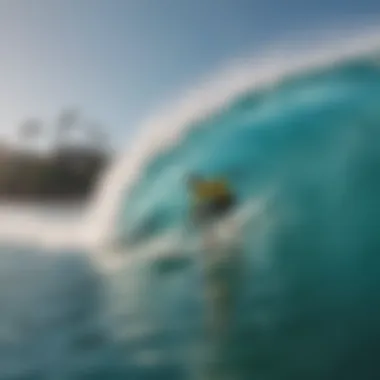
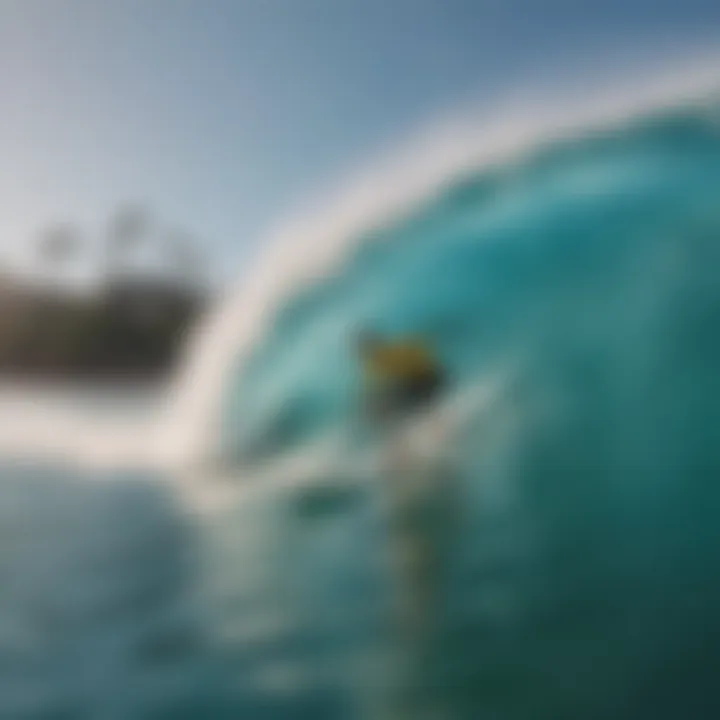
- Point Reyes National Seashore in California features stunning coastal scenery alongside challenging surf breaks.
- Cape Hatteras National Seashore in North Carolina is known for its diverse wave conditions, catering to both beginners and advanced surfers.
- These spots not only promote ecological awareness but also allow surfers to partake in nature while embracing their passion.
National parks reinforce the idea of respecting the ocean and its surroundings, leading to a better understanding of the environmental implications of our sport. Riding waves in such beautiful locales is an invitation to appreciate the rich diversity of our coastal ecosystems.
"Surfers are not just wave riders; they are the guardians of the ocean's beauty and its future."
By exploring a variety of surfing destinations—from popular hotspots to secret beaches and protected parks—surfers can enhance their skills, respect the environment, and find their unique niche in the world of surfing.
The Role of Surf Culture
Surf culture is more than just riding the waves; it’s a lifestyle, a community, and a philosophy. This section dives into the essence of surf culture, illustrating its impact on surfers and the coastal environments where the sport thrives. Not only does it provide a sense of belonging, but it also emphasizes camaraderie, environmental stewardship, and a unique way of life. Understanding surf culture helps surfers connect with their surroundings, discover local customs, and appreciate the art of riding the ocean.
Local Surf Communities
At the heart of surf culture lie the local surf communities. These are groups of individuals bound by their love for the ocean and surfing. Local surfers often establish an unspoken code: respect the lineup, share waves, and take care of the beach. Engaging with these communities enhances the surfing experience. You get tips about the best spots, learn about ocean conditions, and participate in beach clean-ups or surf breaks.
A fascinating aspect of local surf communities is their diversity. For instance, in places like Malibu, California, the surfing crowd ranges from seasoned professionals to enthusiastic beginners. Each brings unique perspectives and experiences, enriching the community’s fabric.
Events and Competitions
Surfing events and competitions aren't just about the thrill of the ride. They play a pivotal role in surf culture by fostering connections among surfers while highlighting the skills of both newcomers and veterans. Local competitions often attract surfers from all around, creating a vibrant atmosphere.
Consider events like the annual U.S. Open of Surfing in Huntington Beach. Not only does it showcase extraordinary talent, but it also embodies the spirit of competition and community involvement. Opportunities arise for local businesses and artists to participate, reinforcing this tight-knit surf culture.
"Surfing is about more than just waves; it’s about the people you meet and the bonds you create along the way."
Sustainability and Environmental Impact
In recent years, surf culture has increasingly focused on sustainability and environmental impact. Surfers recognize their connection to the ocean and strive to protect it. From beach clean-ups to advocating for eco-friendly products, this cultural awareness encourages surfers to take action.
Local initiatives abound. Many surf shops now sell sustainable gear made from recycled materials, while surf schools often incorporate environmental education into their curricula. By promoting these practices, the surf community not only safeguards the environment but also inspires a new generation of surfers to paddle with purpose.
In summary, understanding surf culture enhances the overall surfing experience. Whether through local communities, events that bring everyone together, or a growing commitment to sustainability, it all intertwines to form a rich tapestry of shared experiences and values.
Evaluating Equipment for Local Conditions
When it comes to surfing, the right equipment can make or break the experience. Understanding how to evaluate your gear for local conditions is crucial. Whether you’re riding small, rolling waves or tackling bigger swells, the equipment must complement both your skill level and the specific environment you’re surfing in. This section dives into essential considerations that can enhance your surfing performance and safety.
Choosing the Right Board
Your surfboard is your gateway to the waves. Selecting the right board isn’t just about style or preference; it’s about matching the characteristics of the board with local surf conditions. Here are some guidelines:
- Type of Board: Different boards serve different purposes. For instance, a longboard is ideal for cruising small waves, while a shortboard shines in more intense conditions.
- Volume Matters: A higher volume board floats better, making it suitable for beginners in choppy waters. Conversely, an advanced surfer may prefer a lower volume for more control in technical conditions.
- Shape and Rocker: Pay attention to the shape and rocker profile. A harder edge is beneficial for cutbacks and quick turns, while a smoother outline helps in maintaining speed on flatter waves.
Your local surf shop can provide insights specific to the conditions. Don’t hesitate to ask experienced surfers for advice based on the spot you frequent. Remember, the board that looks cool may not always be the right fit for your next session.
Wetsuit Considerations
As anyone who’s paddled out in chilly water can tell you, the right wetsuit is as important as your surfboard. A wetsuit protects you against the cold, allowing longer sessions and greater comfort. Here are some factors to consider:
- Thickness: The thickness of the wetsuit plays a significant role. In warmer waters, a 2mm or 3mm suit might suffice. But if you’re tackling colder surf, opt for 4mm or 5mm.
- Fit: A snug fit is necessary to keep water from flushing in and cooling you down. However, avoid suits that restrict movement—flexibility is key during your ride.
- Material: Seek quality materials. Neoprene with insulating properties can provide warmth without bulk, leaving you agile on the board.
Before committing to a purchase, try it out in water. Rolling around, paddling, and testing movement can help ensure it feels right.
"Your equipment isn’t just a tool; it’s part of the experience. Choosing wisely ensures you can focus on what really matters – riding that wave!"
By thoroughly evaluating your surfboard and wetsuit for the specific conditions of your local break, you’re setting yourself up for more enjoyable and safer surf adventures. Investing time in understanding the gear will empower you to enhance your skills and fully engage in the surfing culture around you.
Techniques for Local Surfing Success
Navigating the waters of local surfing requires more than just the right gear and a board. It’s about mastering techniques that can lead to a fulfilling and enjoyable experience on the waves. Whether you are just catching your first wave or are a seasoned surfer, refining these techniques can significantly enhance your time in the water. This section delves into paddling techniques, board positioning, and wave selection strategies—three critical elements that contribute to success out on the surf.
Paddling Techniques
Paddling is the heartbeat of surfing; it’s how you get to the wave you want to ride. Effective paddling can change everything. A few pointers to keep in mind:
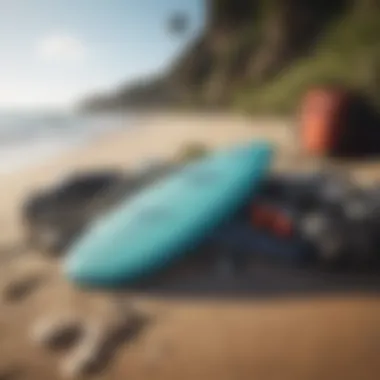
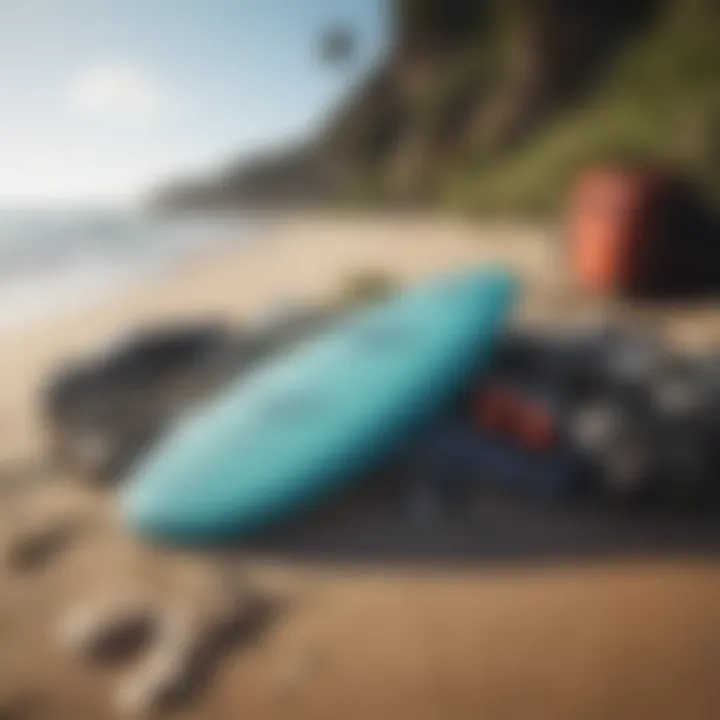
- Body Position: Lying too far back can lead to nosedives. You should balance your weight properly on the board, using your chest and hips to help stabilize your position.
- Stroke Technique: Long, smooth strokes are more efficient than short choppy ones. Keep your arms extended and pull in a fluid motion, with your fingers entering the water first.
- Breath Control: Your breathing rhythm can impact your paddling stamina. Avoid getting too worked up; breathe deep and steady, maintaining focus as you approach the wave.
Practicing these little things can lead to smoother paddling, and consequently, more exciting rides.
Positioning on the Board
Positioning on the board is like finding your sweet spot—it can make or break your wave-riding experience. If you’re too far forward, you'll nose-dive; too far back, you risk losing the wave altogether. Here’s some thoughts on getting it right:
- Find the Balance: The general rule is to lay your body in a place where the nose of the board is just barely above the water. Experimenting with tiny tweaks in your body placement can yield significant changes in your surfing stability.
- Weight Distribution: Shifting your weight can help in turning and accelerating. Leaning a bit to the side while paddling will help you maneuver around others and take off at just the right moment.
- Resting Position: Before you catch a wave, it’s beneficial to find a resting position that feels natural, allowing for quick transitions into paddling for takeoff.
All these aspects will gear you up to ride those waves with style.
Wave Selection Strategies
Not every wave is your friend. Knowing which waves to catch requires sharp observation and sound judgment. Here are strategies to help you read those waves:
- Timing is Everything: Observe the waves before you paddle out. The most thrilling waves come through in sets. Time your paddling such that you catch the wave just as it stands tall.
- Take the Right Angle: Positioning yourself at the right angle to the oncoming wave not only aids in taking off but also sets the stage for better riding.
- Avoid Crowds: It’s often smarter to choose a wave further away from others. Crowded spots can lead to dangerous situations and missed opportunities to ride.
"A good surfer not only rides the waves but also pays close attention to the ocean’s rhythm."
Mastering these strategies will help you not only improve but also enjoy surfing as a whole. The synergy of these techniques can elevate your overall experience, turning what could be just another day at the beach into a full-fledged adventure on the water.
Tips for Beginning Surfers
Starting your surfing journey can be as thrilling as it is daunting. This section explores crucial tips that every newcomer should embrace. Understanding the fundamental aspects of surfing can make or break your experience, ensuring that you develop a love for this sport, while also enhancing your safety and enjoyment in the water.
Learning the Basics
Before even entering the surf, it is paramount to grasp the basics. Think of them as the building blocks of your surfing skills. This includes not only the techniques related to paddling and balancing but also the essential knowledge about your surfboard and ocean behaviors.
- Paddling Technique: Proper paddling is no small fry. It's the first step – like the engine of a surfer's vehicle. Start by laying on your stomach with your body centered on the board, arms extended. Use a flutter kick with your legs while pulling your arms back in a sweeping motion to propel forward.
- Pop-Up Practice: Next comes the pop-up. This is where you go from lying down to standing in one swift motion. Practicing this on dry land can help build muscle memory. Start in a push-up position and spring your feet forward, landing in a crouched position, ready to ride the wave.
- Balance and Stance: Once you're up, finding your balance is key. Stand with your feet just shoulder-width apart; this gives a stable base. Keep your knees slightly bent to absorb bumps and shifts in the water.
Pro Tip: Practicing yoga or balance exercises can really help enhance your stability on the board. Don’t forget, all surfers fall – it's part and parcel of the journey. Embrace the wipes with a positive attitude.
Finding Suitable Beginners' Spots
Locating the right surf spot can significantly impact your learning curve. As a novice, a beach with forgiving waves is essential rather than ones that would have experienced surfers holding their sides laughing at you. Here are key considerations when scouting locations:
- Calm Waters: Look for beaches with smaller, consistent waves – these areas are often referred to as “soft tops.” A beach like Waikiki in Hawaii is renowned for its gentle surf, making it a delightful spot for beginners.
- Friendly Locals: Finding a spot with a supportive community can make your experience all the more enjoyable. Asking local surfers for advice or even joining their sessions can lead to valuable tips and encouragement. Websites like Reddit Surfing can connect you with communities willing to help you along your journey.
- Long Beach Breaks: Opt for long, gradual beach breaks rather than point breaks. Beach breaks often provide a more forgiving environment for learning; plus, they generally have areas designated to beginners.
- Safety in Numbers: Surfing with a buddy, especially as you’re just starting out, is always a good practice. Not only for safety reasons but to share the surf stoke as well.
"Surfing is the most fun you can have standing up." – Unknown
Staying Safe While Surfing
Surfing pays back the thrill and excitement but carries its own risks too. Understanding safety measures is crucial for every surfer, regardless of skill level. Being aware of ocean conditions and having the right safety gear can mean the difference between an exhilarating session and a harmful one.
Understanding Ocean Conditions
The ocean is a dynamic and ever-changing environment. Each surf session presents unique challenges based on weather patterns, tides, and local wildlife. Here are some considerations surrounding ocean conditions:
- Tides: Knowing the tide schedule helps predict wave quality and strength, which varies significantly during high and low tides. Many spots are not conducive to surfing during low tide, causing risks if one attempts to paddle out.
- Rip Currents: These powerful currents can pull surfers away from the shore. Identifying how to spot them can help avoid dangerous situations. Look for choppy water, gaps in waves, or foam moving away from the beach.
- Fish and Marine Life: Some areas are frequented by sharks or jellyfish, particularly during certain seasons. Familiarize yourself with local wildlife to understand when to be cautious.
Everyone loves surfing, but it shouldn't be at the cost of your safety. Make it a point to check local surf forecasts, and don't shy away from asking seasoned locals about the conditions.
Safety Equipment and Practices
Besides understanding ocean conditions, having the right equipment and practices truly enhances safety:
- Leash: A good quality leash is non-negotiable. It keeps your board attached to you, ensuring you don’t have to swim back to retrieve it in case of a wipeout.
- Wetsuit: Depending on the water temperature, a wetsuit not only keeps you warm but also adds a layer of protection against scratches or stings from marine life.
- Rash Guards: Skin irritations from board contact or sun exposure can be avoided with rash guards. They create a barrier while also protecting against UV rays.
- Sunscreen: Apply a water-resistant sunscreen generously before hitting the waves. Reapply during breaks. Not only can sunburn ruin a surf trip, but it can also have long-term effects on your skin.
Keep in mind, safety practices aren't just for novices. They apply to everyone!
In closing, surfing has a unique thrill, but there’s no surf session without understanding safety elements. Being prepared allows you to enjoy the beauty of the ocean without unnecessary stress or danger. Embrace the waves but always remember to prioritize your safety as you carve through them.
Closure
As we wrap up this exploration of surfing places nearby, it’s crucial to reflect on not just the where, but also the how and why of our surfing journeys. The world of surfing is more than simply catching waves; it's about forging connections—both with nature and with one another. Engaging with local surf communities can profoundly enhance your experience, offering insights that you might not glean from just a guidebook. These connections can lead to invaluable friendships and a deeper understanding of the local culture and tide cycles. The benefits extend beyond camaraderie, reaching into the realm of shared knowledge and mutual growth.
"The ocean is a unique classroom where every wave teaches us resilience and respect."
Moreover, the concept of continuous learning should resonate deeply within every surfer's heart. Each session spent in the surf is an opportunity to refine your skills, explore new techniques, and immerse yourself in the ever-changing ocean environment. Whether gripping the board for the first time or aiming for that elusive barrel, the pursuit of improvement never ends. Embracing exploration—be it trying a new surf spot, mastering a different maneuver, or inquiring about eco-friendly practices—encourages not just personal growth, but also fosters environmental stewardship. It’s essential to recognize the responsibility surfers carry in protecting the very waves they ride.
In summary, the key elements of connecting with the local surf community and committing to lifelong learning and exploration are vital facets that can amplify the otherwise solitary pursuit of surfing. When surfers engage with each other and their surroundings, the experience transforms from sport to a shared passion, enriching their lives and those of others. So paddle out, stay curious, and let the waves shape your story.















